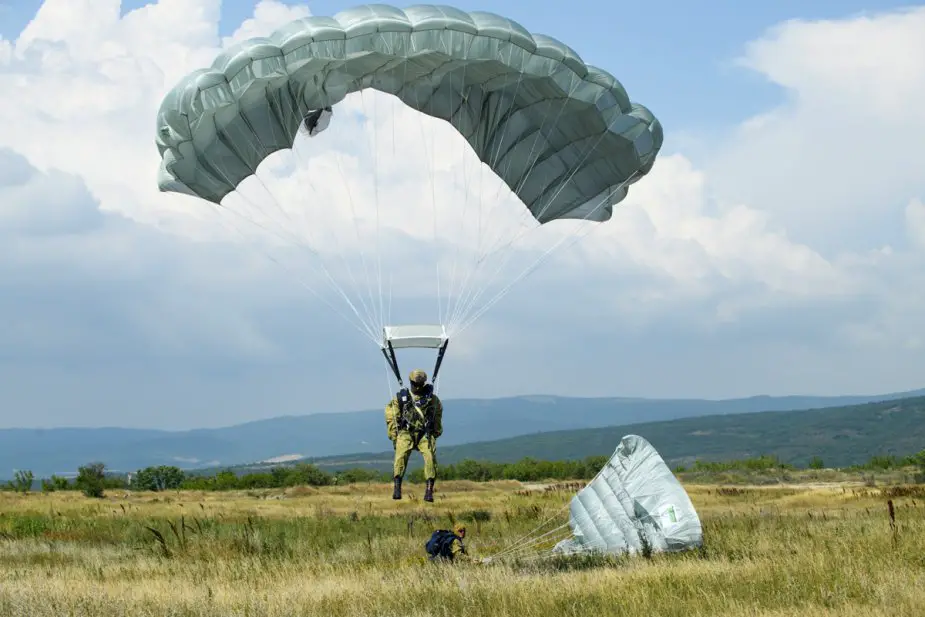The final 2019 check took place in the Russian Airborne Troops in the past month, the Russian Defense Ministry said. "The final check engaged more than 40,000 servicemen from all the formations, military units and airborne units deployed in the Western, Central, Southern and Eastern Military Districts. The final check events took place in two stages in accordance with a plan of training troops," it said.

Paratrooper landing with his Arbalet-2 parachute (Picture source: Russian MoD)
The formations’ commissions assessed the inspected military units and subdivisions by test results in firing from small arms and combat hardware weapons; tactical, technical and specialized training while the Tula Airborne and Ussuriysk Airborne Assault formations were checked by commissions of the Russian Airborne Troops under the supervision Major General Anatoly Kontsevoy and Deputy Commander of the Russian Airborne Troops for logistics support Major General Nariman Timergazin.
The performance of the Kamyshn airborne assault formation was assessed with account taken of a brigade tactical exercise, which was held in the Volgograd region in October 2019. Meanwhile, the Ivanovo and Ulyanovsk airborne assault formations and a control formation from the Moscow region were assessed by the results of their performance during the Tsentr-2019 command-and-staff exercises.
The Military Council of the Russian Airborne Troops that will be held in mid-November 2019 will review the results of the final check at a meeting to be held in mid-November 2019.
Airborne troopers made more than 170,000 parachute jumps
Servicemen of the Russian Airborne Troops have made more than 170,000 parachute jumps since the start of 2019. More than 16,000 parachute jumps were made in October, the Russian Defense Ministry said. "The paratroopers landed in full parachute gear armed with service weapons from altitudes ranging from 600 to 2,000 meters from Ilyushin Il-76MD and Antonov An-2 military transport aircraft as well as Mil Mi-8AMTSH army aviation helicopters during the day and at night at limited landing grounds. The parachute opening was delayed from three to twenty seconds," the ministry said.
This year, the paratroopers have used D-10, Arbalet-1 and Arbalet-2 systems to parachute both near home stations and at unknown and unequipped sections of terrain in Russian regions. The above-mentioned parachute systems make it possible for a parachuter not only to land quickly and safely but also remain unnoticed by the adversary and carry the necessary weapons, ammunition and outfit with a total permissible weight of up to 150 kg.
© Copyright 2019 TASS / Army Recognition Group SPRL. All rights reserved. This material may not be published, broadcast, rewritten or redistributed.














